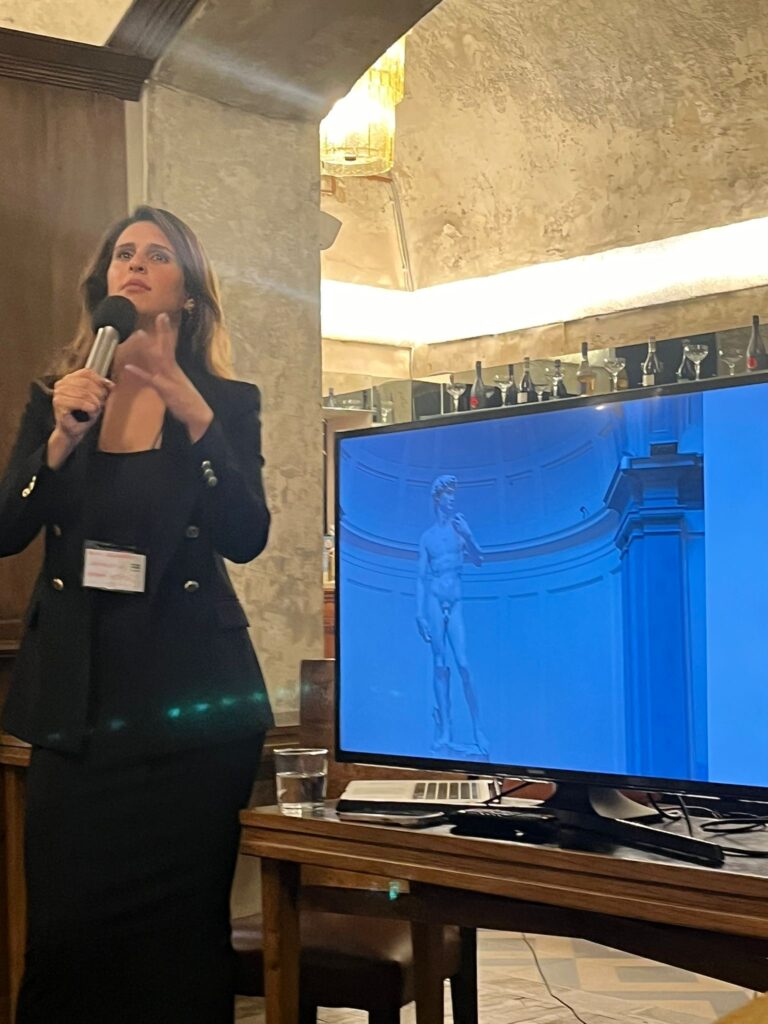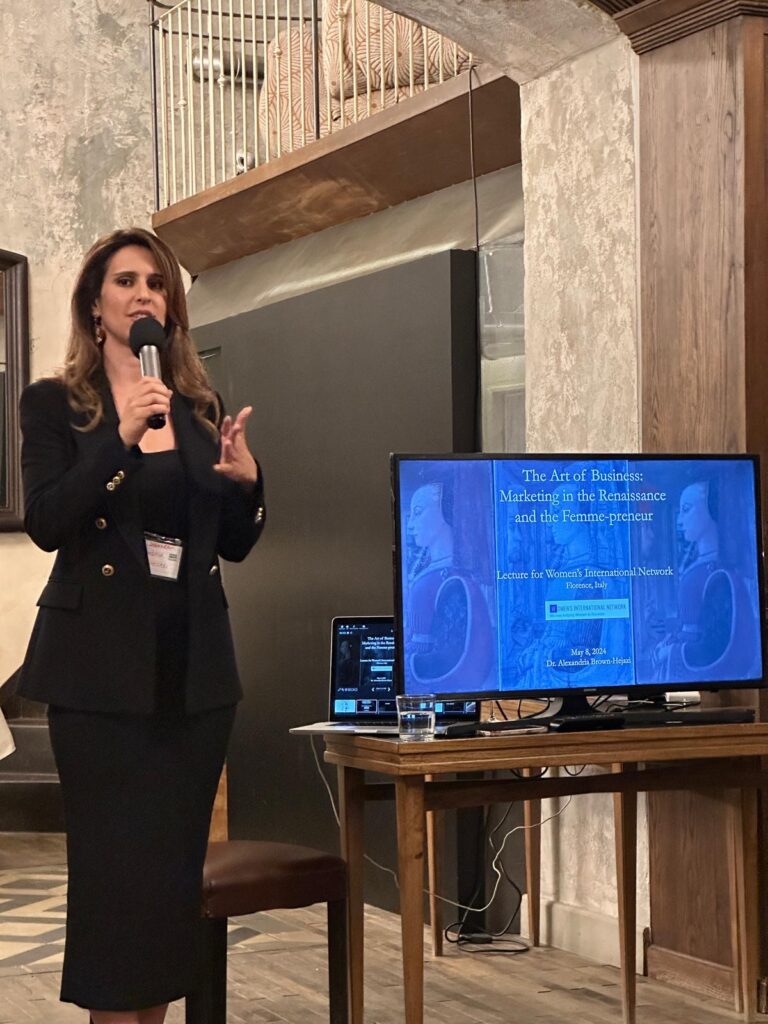May 2024 Meeting speaker recap
Back to the Future: Modern Marketing hails from the Renaissance
by L.A. Robbins


Renaissance artisans paved the way for modern marketing, imprinting memorable brands and logos in the minds of the public. Think you’re clever, splashing colourful posters around the internet emblazoned with your unique brand? Nyet! It’s been done for centuries. And rather well.
In her 10 May talk ‘The Art of Business’, Dr. Alexandra Brown-Hejazi demonstrated that from as early as the late Middle Ages guilds advertised themselves through their products and craftsmen used iconic symbolism in their paintings, sculptures and architecture. A supreme example of marketing proficiency is evidenced in the ubiquitous coat of arms of the 1t5th century Medici family; placards of the Florentine potentate shamelessly usurped places normally awarded to the crucifix, scholars argue.* Many artists of this period echoed and dictated the going fashion through the sumptuous fabrics, intricate jewellery and ornate hairstyles in their paintings, sculptures. (think: contemporary glamour magazine photos)
Competition in the Renaissance may have been as fierce as it is today, with several companies or artisans competing to win commissions. The need to outfox vying rivals is exemplified in the story of Leonardo di Vinci’s cover letter, Brown-Hejazi told listeners. After his Florentine benefactor (the Duke of Florence) refused to put him forward for the sculpture of a bronze horse in Milan, the artist took it upon himself to craft a cunning ‘choose me’ letter, every bit as persuasive as what one finds today. Da Vinci boasted of his talents in the creation and design of military instruments and his prowess as a sculptor and architect to assert his aptitude in making the horse for the Milanese Duke. He even outsourced the execution of the letter (a modern practice) because his unique mirror script wouldn’t have been intelligible to the Sforza clan, who ultimately hired him. Michelangelo must have hugely enhanced his reputation by painting a Sistine chapel panorama ten times more expansive than what was originally requested. Perhaps the most effective PR man of the Renaissance was sculptor and painter Giorgio Vasari, who chronicled the Lives of the Artists (think: a modern day Forbes 500 list), extolling their virtues and bringing himself to enduring fame, too. There were Renaissance ‘femme-preneurs’ as well, Brown-Hejazi notes with a crafty smile. Artemesia, sexually assaulted and cast out, may have achieved the revenge she sought in her many portraits of courageous females defeating male adversaries.
Brown-Hejazi, who flew in from Miami on the morning of her talk (looking tanned and rested, go figure), teaches Art History at Florence’s Syracuse University, which may explain the source of her spiffy Ppt. She continues to explore her first passion (architecture) in her lecturing these days, having studied art history and design at Stanford and Harvard universities.

*Sidebar:
‘Palle! Palle! Palle!’ became the bellecose call to arms that summoned staunch defenders of the Medici court to defeat the enemy. The balls (five red and one blue) were rendered everywhere, on shields and swords and armour, and of course, on any church, building or monument to which the Medici family donated funds.
What did the balls symbolize? No one knows.
dents made by a fierce Mugello giant in the shield of a knight of Charlemagne
pharmacy pills representing doctors: the word ‘medici’ means doctors
coins, a symbol of money changers representing the mercantile class to which the Medici family belonged.

